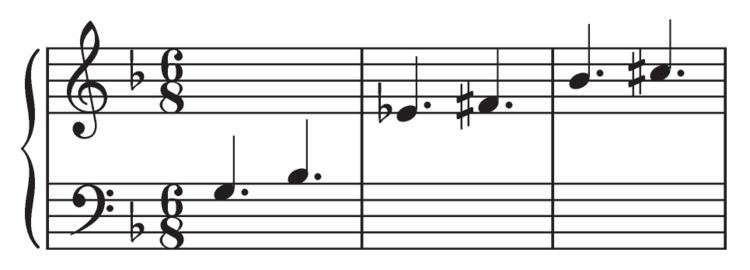 | ||
The Fugue in G minor (K. 30, L. 499) by Domenico Scarlatti is a one-movement harpsichord sonata popularly known as the Cat fugue or Cat's fugue (La Fuga del Gatto).
Contents
History of the nickname
The nickname, which was never used by the composer himself but was introduced only early in the 19th century, originates from a story about how Scarlatti came up with the strikingly unusual motif on which the fugue is built. Legend has it that Scarlatti had a pet cat called Pulcinella, who was described by the composer as prone to walking across the keyboard, always curious about its sounds.
On one occasion, according to the story, Scarlatti wrote down a phrase from one of these "improvisation sessions", and used it as a lead motif in a fugue:
The nickname was used in concert programmes in the 19th Century (see Performances section below), and was also used by publishers including Muzio Clementi, Carl Czerny and Alessandro Longo.
Influence
The piece was published in London in 1739. George Frideric Handel, famous for his reuse of his own music and 'borrowings' from the works of others, wrote his Grand Concertos, Op. 6 between late September and late October 1739 and the strange descending intervals of the second movement of No. 3 are reminiscent of Scarlatti's piece. Early 19th century theorist and composer Anton Reicha knew the work and wrote a fugue on the same subject for his 36 Fugues of 1803.
Hans von Bülow wrote an arrangement for concert performance.
Performances
The Cat fugue has been a popular piece at least since the 19th century. Franz Liszt – who had been introduced to the piece by the Roman collector of manuscripts Abbé Santini – included it in his programmes in Berlin in the early 1840s; Ignaz Moscheles also performed it; both programmed it under the title Cat's fugue.
